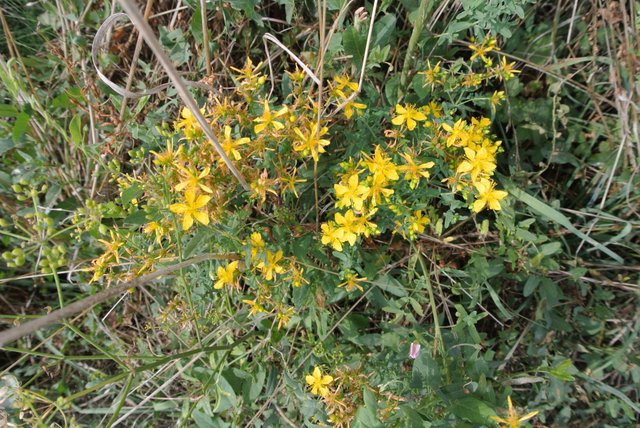Hypericum perforatum, known as perforate St. John's-wort, is a flowering plant in the family Hypericaceae and the type species of the genus Hypericum.
Possibly a hybrid between H. maculatum and H. attenuatum, the species can be found across temperate areas of Eurasia and has been introduced as an invasive weed to much of North and South America, as well as South Africa and Australia. While the species is harmful to livestock and can interfere with prescription drugs, it has been used in folk medicine over centuries, and remains commercially cultivated in the 21st century. Hyperforin, a phytochemical constituent of the species, is under basic research for its possible biological properties.
Traditional medicine
Common St John's wort has been used in herbalism for centuries. It was thought to have medical properties in classical antiquity and was a standard component of theriacs, from the Mithridate of Aulus Cornelius Celsus' De Medicina (ca. 30 CE) to the Venice treacle of d'Amsterdammer Apotheek in 1686. Folk usages included oily extract (St John's oil) and Hypericum snaps. Hypericum perforatum is a common species and is grown commercially for use in herbalism and traditional medicine.
The red, oily extract of H. perforatum has been used in the treatment of wounds, including by the Knights Hospitaller, the Order of St John Both hypericin and hyperforin are under study for their potential antibiotic properties.
This photo is taken in city Prijedor, in Republic of Srpska, Bosnia and Herzegovina.
Photo is mine property and is shot with my micro 4/3 digital camera Nikon 1 J1.
You can use this photo for commercial purposes. No attribution required.
